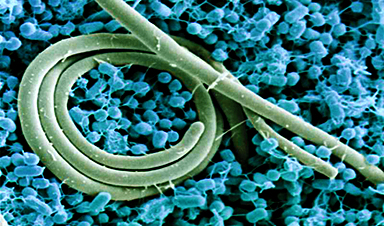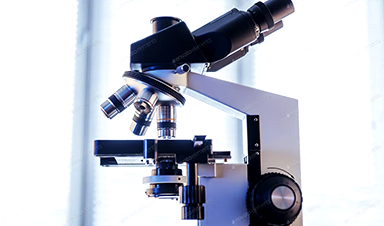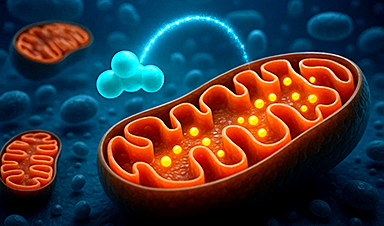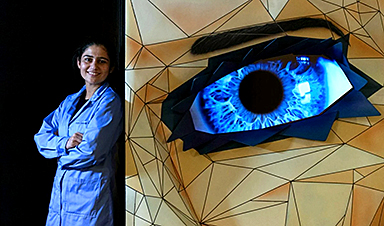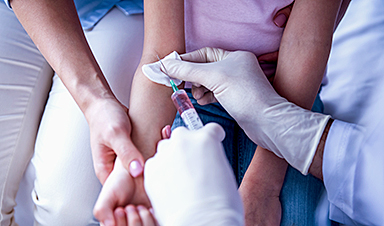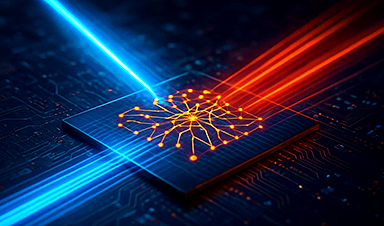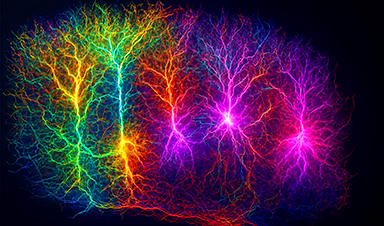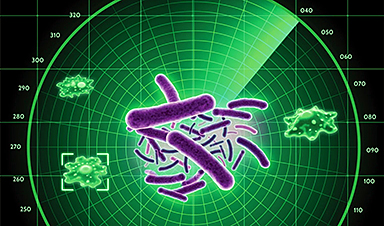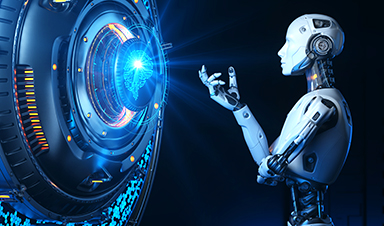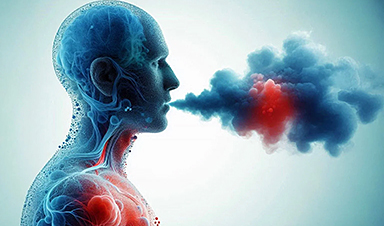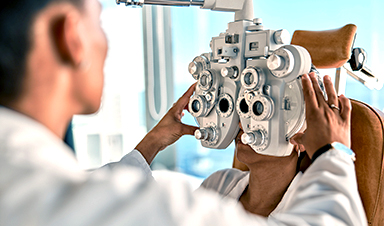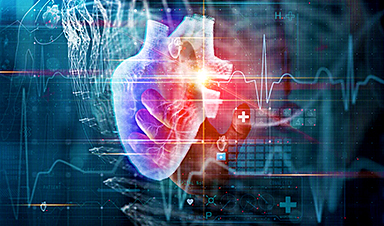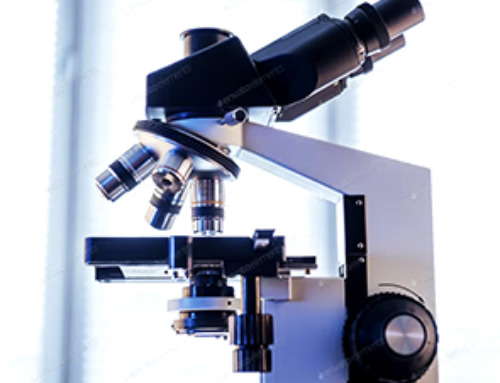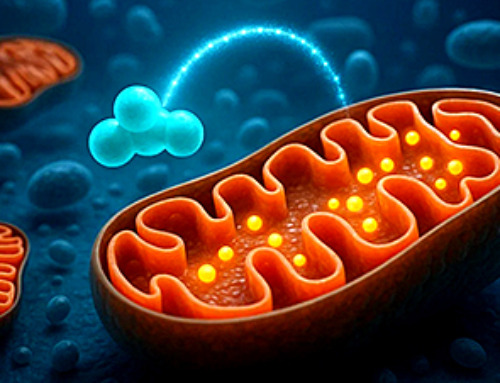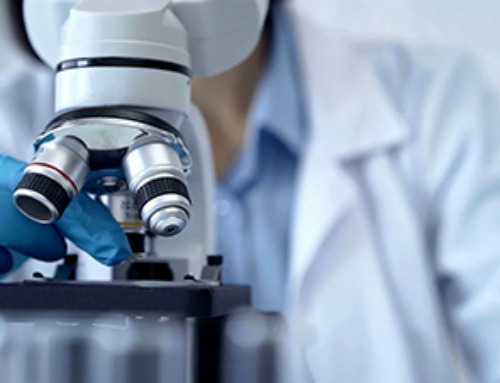A new UC Davis Health study has uncovered how Salmonella bacteria, a major cause of food poisoning, can invade the gut even when protective bacteria are present. The research, published in the Proceedings of the National Academy of Sciences, explains how the pathogen tricks the gut environment to escape the body’s natural defenses.
The digestive system is home to trillions of bacteria, many of which produce short-chain fatty acids (SCFAs) that help fight harmful pathogens. But Salmonella manages to grow and spread in the gut, even though these protective compounds are present. The study asks: How does Salmonella get around this defense?
“We knew that Salmonella invades the small intestine, although it is not its primary site of replication. The colon is,” said the lead author of the study Andreas Bäumler. Bäumler is a UC Davis distinguished professor and vice chair of research in the Department of Medical Microbiology and Immunology.
Bäumler and his team discovered that the answer lies in how the pathogen changes the gut’s nutrient balance. When Salmonella enters the small intestine, it causes inflammation in the gut lining and disrupts the normal absorption of amino acids from food. This creates an imbalance in nutrients in the gut.
The imbalance gives Salmonella the resources it needs to survive and multiply in the large intestine (colon), where beneficial bacteria usually curb its growth. The study showed that salmonella causes inflammation in the small intestine in order to derive nutrients that fuel its replication in the colon.
Salmonella alters gut nutrient environment to survive
Using a mouse model, the team looked closely at how Salmonella changed the chemical makeup of the gut. They traced amino acid absorption in the small and large intestines.
They found that in mice that were infected with Salmonella, there was less absorption of amino acids into the blood. In fact, two amino acids, lysine and ornithine, became more abundant in the gut after infection. These amino acids helped Salmonella survive by preventing the growth-inhibiting effects of SCFAs. They did this by restoring Salmonella’s acidity (pH) balance, allowing the pathogen to bypass the microbiota’s defenses.
“Our findings show that Salmonella has a clever way of changing the gut’s nutrient environment to its advantage. By making it harder for the body to absorb amino acids in the ileum, Salmonella creates a more favorable environment for itself in the large intestine,” Bäumler said.
In the study, the team showed that Salmonella uses its own virulence factors (disease causing molecules) to activate enzymes that break down key amino acids like lysine. This helps the pathogen avoid the SCFAs’ protective effects and grow more easily in the gut.
New insights could lead to better gut infection treatments
The new insights potentially explain how the gut environment changes during inflammatory bowel disorders , such as Crohn’s disease and ulcerative colitis, and could lead to better treatments for gut infections. By understanding how Salmonella changes the gut environment, researchers hope to develop new ways to protect the gut microbiota and prevent these infections.
“This research uses a more holistic approach to studying gut health. It not only gives us a better understanding of how Salmonella works, but also highlights the importance of maintaining a healthy gut microbiota,” said Lauren Radlinski, the study’s first author and postdoctoral fellow in the Bäumler Lab. “Our findings could lead to new treatments that help support the microbiota during infection.”
The study’s results could inspire future treatments, including probiotics or dietary plans designed to strengthen the body’s natural defenses against harmful pathogens.
“By learning how a pathogen manipulates the host’s system, we can uncover ways to boost the host’s natural defenses,” Radlinski said.
Co-authors of the study are Andrew Rogers, Lalita Bechtold, Hugo Masson, Henry Nguyen, Anaïs B. Larabi, Connor Tiffany, Thaynara Parente de Carvalho and Renée Tsolis of UC Davis.
More information: Lauren C. Radlinski et al, Salmonella virulence factors induce amino acid malabsorption in the ileum to promote ecosystem invasion of the large intestine, Proceedings of the National Academy of Sciences (2024). DOI: 10.1073/pnas.2417232121
News
Differentiating cancerous and healthy cells through motion analysis
Researchers from Tokyo Metropolitan University have found that the motion of unlabeled cells can be used to tell whether they are cancerous or healthy. They observed malignant fibrosarcoma cells and [...]
This Tiny Cellular Gate Could Be the Key to Curing Cancer – And Regrowing Hair
After more than five decades of mystery, scientists have finally unveiled the detailed structure and function of a long-theorized molecular machine in our mitochondria — the mitochondrial pyruvate carrier. This microscopic gatekeeper controls how [...]
Unlocking Vision’s Secrets: Researchers Reveal 3D Structure of Key Eye Protein
Researchers have uncovered the 3D structure of RBP3, a key protein in vision, revealing how it transports retinoids and fatty acids and how its dysfunction may lead to retinal diseases. Proteins play a critical [...]
5 Key Facts About Nanoplastics and How They Affect the Human Body
Nanoplastics are typically defined as plastic particles smaller than 1000 nanometers. These particles are increasingly being detected in human tissues: they can bypass biological barriers, accumulate in organs, and may influence health in ways [...]
Measles Is Back: Doctors Warn of Dangerous Surge Across the U.S.
Parents are encouraged to contact their pediatrician if their child has been exposed to measles or is showing symptoms. Pediatric infectious disease experts are emphasizing the critical importance of measles vaccination, as the highly [...]
AI at the Speed of Light: How Silicon Photonics Are Reinventing Hardware
A cutting-edge AI acceleration platform powered by light rather than electricity could revolutionize how AI is trained and deployed. Using photonic integrated circuits made from advanced III-V semiconductors, researchers have developed a system that vastly [...]
A Grain of Brain, 523 Million Synapses, Most Complicated Neuroscience Experiment Ever Attempted
A team of over 150 scientists has achieved what once seemed impossible: a complete wiring and activity map of a tiny section of a mammalian brain. This feat, part of the MICrONS Project, rivals [...]
The Secret “Radar” Bacteria Use To Outsmart Their Enemies
A chemical radar allows bacteria to sense and eliminate predators. Investigating how microorganisms communicate deepens our understanding of the complex ecological interactions that shape our environment is an area of key focus for the [...]
Psychologists explore ethical issues associated with human-AI relationships
It's becoming increasingly commonplace for people to develop intimate, long-term relationships with artificial intelligence (AI) technologies. At their extreme, people have "married" their AI companions in non-legally binding ceremonies, and at least two people [...]
When You Lose Weight, Where Does It Actually Go?
Most health professionals lack a clear understanding of how body fat is lost, often subscribing to misconceptions like fat converting to energy or muscle. The truth is, fat is actually broken down into carbon [...]
How Everyday Plastics Quietly Turn Into DNA-Damaging Nanoparticles
The same unique structure that makes plastic so versatile also makes it susceptible to breaking down into harmful micro- and nanoscale particles. The world is saturated with trillions of microscopic and nanoscopic plastic particles, some smaller [...]
AI Outperforms Physicians in Real-World Urgent Care Decisions, Study Finds
The study, conducted at the virtual urgent care clinic Cedars-Sinai Connect in LA, compared recommendations given in about 500 visits of adult patients with relatively common symptoms – respiratory, urinary, eye, vaginal and dental. [...]
Challenging the Big Bang: A Multi-Singularity Origin for the Universe
In a study published in the journal Classical and Quantum Gravity, Dr. Richard Lieu, a physics professor at The University of Alabama in Huntsville (UAH), which is a part of The University of Alabama System, suggests that [...]
New drug restores vision by regenerating retinal nerves
Vision is one of the most crucial human senses, yet over 300 million people worldwide are at risk of vision loss due to various retinal diseases. While recent advancements in retinal disease treatments have [...]
Shingles vaccine cuts dementia risk by 20%, new study shows
A shingles shot may do more than prevent rash — it could help shield the aging brain from dementia, according to a landmark study using real-world data from the UK. A routine vaccine could [...]
AI Predicts Sudden Cardiac Arrest Days Before It Strikes
AI can now predict deadly heart arrhythmias up to two weeks in advance, potentially transforming cardiac care. Artificial intelligence could play a key role in preventing many cases of sudden cardiac death, according to [...]
